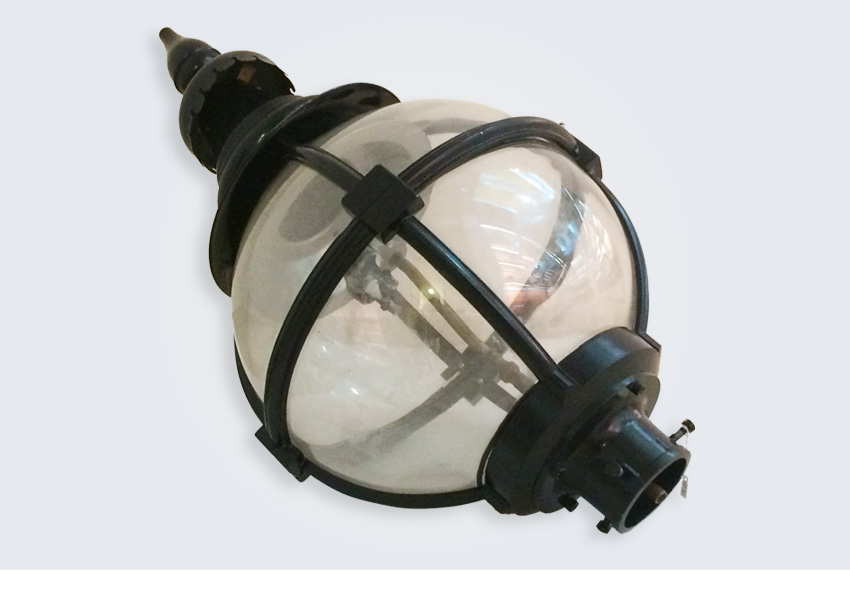
Iron and PVC
1879
MG 594
This round lamppost is unique in the world of lampposts. For most of us this is has been a rarity until now because we are unaware that these used to be used in places around the country. They illuminated public places in several European and North American cities and they were most common in their country of origin, England, from 1879.
Although its shape is original, the burner was even more so. Both were created by George Bray, who was born into a working class family in Leeds (England). As the years passed, Bray paved the way in the world of gas appliances and very effectively combined marketing with his own products, which we would now refer to as being low-cost: minimum price, maximum quality.
The main feature of this lamppost was its burner. In fact, a multi-burner, which was shaped like a butterfly, was installed inside. This meant light could be emitted in all directions. To make this work better, Bray added a ceramic tip to the flat brass burners. This all meant that the light being emitted from the lamppost was now more efficient than with previous types of burners. The burner had some very precise holes to release the gas, and the rest of the system would not have worked without these.
George Bray was such a perfectionist that he built a machine especially for these holes. This machine operated in his factory, which enabled him to control the overall quality of the product he had invented.
Bray is fairly unknown in the history of gas in Spain. In the history of public lighting in England and the USA, however, he features prominently.